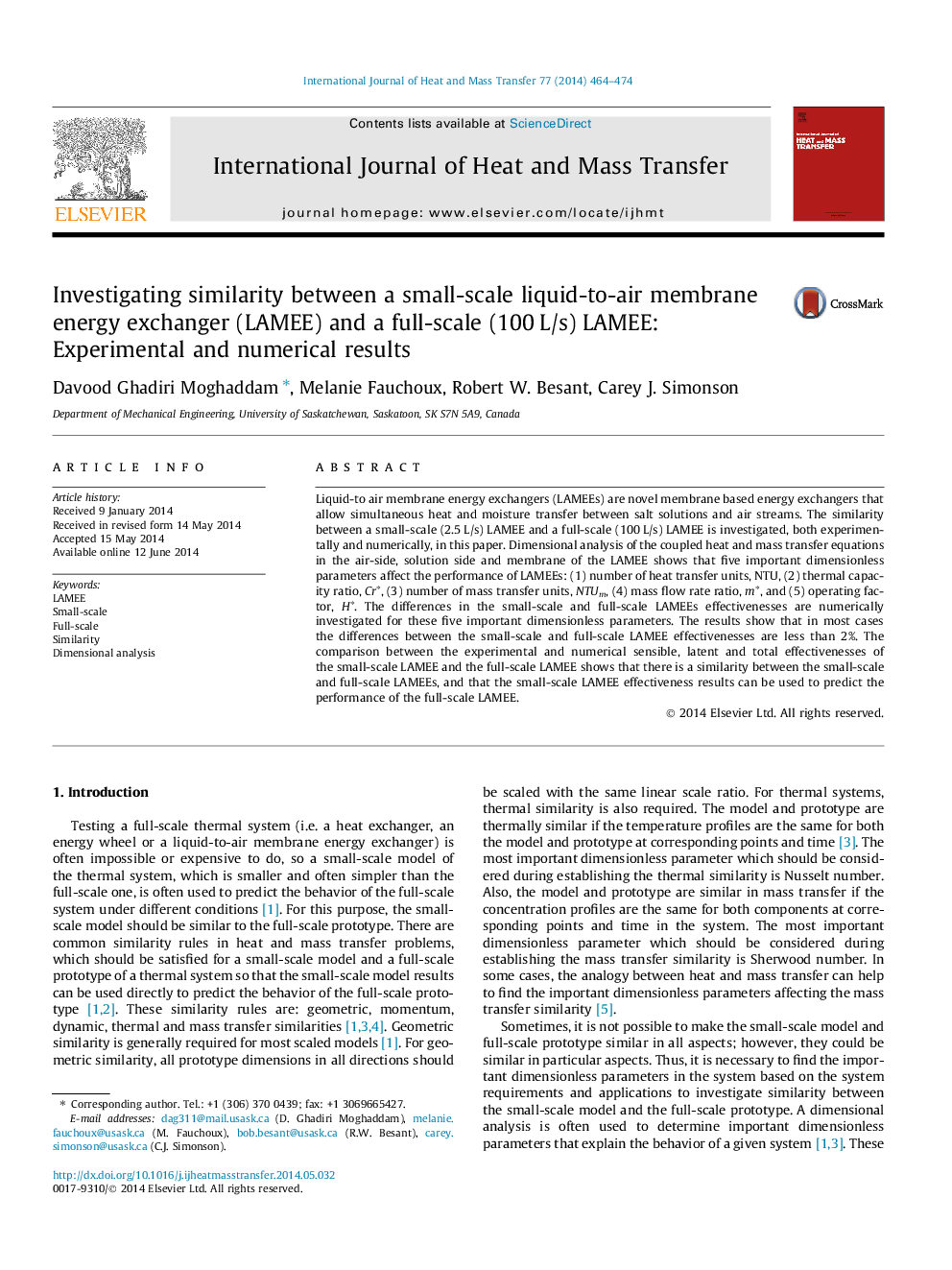| Article ID | Journal | Published Year | Pages | File Type |
|---|---|---|---|---|
| 657807 | International Journal of Heat and Mass Transfer | 2014 | 11 Pages |
Abstract
Liquid-to air membrane energy exchangers (LAMEEs) are novel membrane based energy exchangers that allow simultaneous heat and moisture transfer between salt solutions and air streams. The similarity between a small-scale (2.5Â L/s) LAMEE and a full-scale (100Â L/s) LAMEE is investigated, both experimentally and numerically, in this paper. Dimensional analysis of the coupled heat and mass transfer equations in the air-side, solution side and membrane of the LAMEE shows that five important dimensionless parameters affect the performance of LAMEEs: (1) number of heat transfer units, NTU, (2) thermal capacity ratio, Crâ, (3) number of mass transfer units, NTUm, (4) mass flow rate ratio, mâ, and (5) operating factor, Hâ. The differences in the small-scale and full-scale LAMEEs effectivenesses are numerically investigated for these five important dimensionless parameters. The results show that in most cases the differences between the small-scale and full-scale LAMEE effectivenesses are less than 2%. The comparison between the experimental and numerical sensible, latent and total effectivenesses of the small-scale LAMEE and the full-scale LAMEE shows that there is a similarity between the small-scale and full-scale LAMEEs, and that the small-scale LAMEE effectiveness results can be used to predict the performance of the full-scale LAMEE.
Related Topics
Physical Sciences and Engineering
Chemical Engineering
Fluid Flow and Transfer Processes
Authors
Davood Ghadiri Moghaddam, Melanie Fauchoux, Robert W. Besant, Carey J. Simonson,
